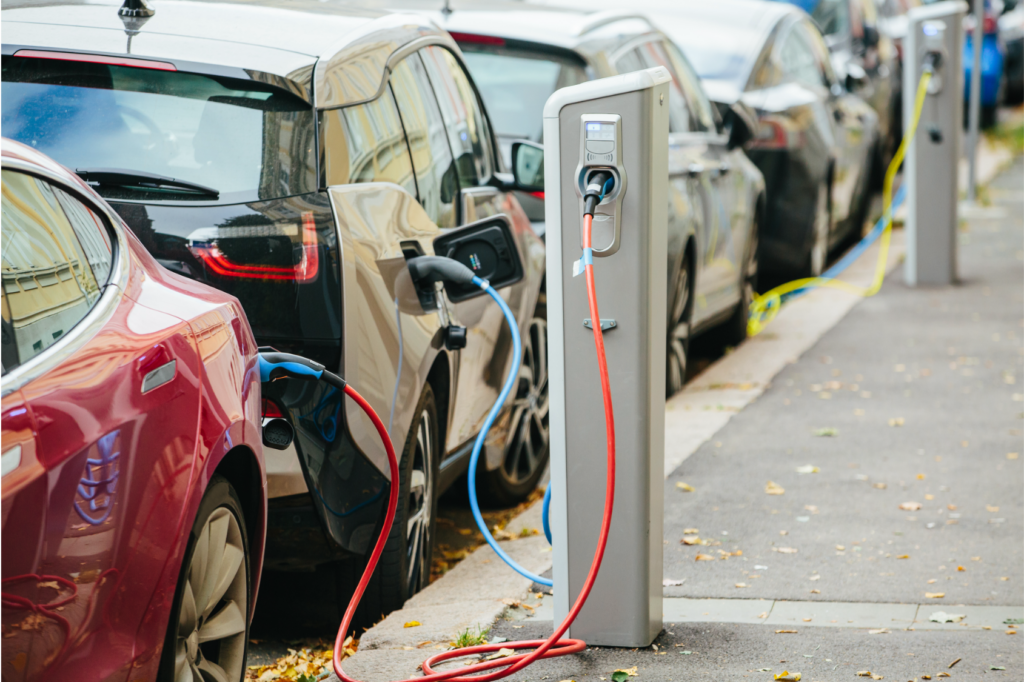By Marc J. Elzenbeck
Short of being plugged directly into Hanford’s nuclear power reservation, Vashon and Maury Islands are the ideal run-about ranges for electric vehicles. Although the Island has enough elevation changes to be notorious to visiting bicyclists during the annual “Passport to Pain,” we sit at a confluence of undersea cables sending us clean, stable, and practically inexhaustible power, borne of gravity passing water over turbines.
Woody Guthrie’s majestic hymn to hydroelectricity, “Roll on Columbia,” was directly commissioned by massive federal government investment into the Pacific Northwest during the Great Depression: “And on up the river is Grand Coulee Dam / The mightiest thing ever built by a man / To run the great factories and water the land / So roll on, Columbia, roll on.”
Cheap electricity made the once sparsely populated Northwest boom, and almost 100 years on, we still benefit from the investment, with residents paying only about two-thirds of the national rate. It should probably be even cheaper. Washington, having only a 2.3% share of the United States population, generates more electricity from hydropower than any other state, and accounts for a whopping 31% of total US utility-scale hydroelectric generation. It sends excess energy on to eight other Western states and parts of Canada.
That makes us the linchpin of the “West Coast Electric Highway,” a network of fast-charging EV stations located every 25 to 50 miles along Interstate 5, Highway 99, and other major roadways from British Columbia to Baja, California. By coincidence and design, more than 66,000 all-electric vehicles are already registered in our state, fourth-most in the nation. As of 2023, Washington has more than 1,600 public-access electric vehicle charging stations with about 4,100 charging ports, and more lighting up every day.
But can everybody be driving an EV by 2030? Senate Bill 5974, signed into law by Governor Jay Inslee in 2022, is part of a $16.9 billion “Move Ahead Washington” package. Like other states, the bill would effectively ban the sale of internal combustion vehicles by 2030. Per Inslee, “Transportation is our state’s largest source of greenhouse gas emissions. There is no way to talk about climate change without talking about transportation.”
Here on Vashon, sure, everyone could go electric. We could shame the last diehard, gas-guzzling Toyota Prius owners into finally letting go of their old hybrid technology and embracing modernity. But while saving the planet, we might want to consider some math. On a daily commute, the average Tesla consumes about the same power it takes to run 24 household refrigerator/freezers: approximately 3,000 households, 72,000 fridges, roughly 72 million kWh, or about 250 billion BTUs per year. Ooof! How many charging stations will we need to install at the IGA parking lot so we can get to the new electric ferries? A thousand?
There are currently 3 million registered vehicles in Washington state. Subtracting those existing 66,000 EVs means in theory that there’s about 98% of the way to still go, in six-and-a-half years. Using the refrigerator conversion rule, well, that’s a lot of power. It doesn’t seem like we’ll be sending many spare hydro cycles on down to California, which has a similar law … and 14.3 million vehicles. And where, last summer, Governor Newsom asked owners to refrain from charging their megawatt-hungry EVs so as to not destabilize an increasingly troublesome renewables-fed grid.
Other signs and portents give pause to the notion that a smooth transition to an all-electric future is possible. Cost savings between charging up and gassing up are narrowing. Chile and Mexico are nationalizing their lithium mines, children are picking through Congolese dirt for cobalt, and diesel power must dig through 500,000 pounds of earth before mining enough to refine into one car battery.
The CEOs of Toyota and Subaru both recently quit over pressures to speed up the conversion. Ford’s vice-president in charge of the battery supply chain just resigned to spend more time with her family after a fire in its factory “Lightning” pickup lot, where production is halted. Ford estimates it will lose $3 billion on EVs this year. GM’s CEO stopped, then restarted its EV program, after telling owners to park at least 50 feet away from structures. Volkswagen’s own study estimates that their new Vanagon doesn’t start turning carbon-negative, compared to an internal combustion twin engine, until 80,000 miles elapse.
Without a massive increase in electricity production, there will simply not be enough power to go around for all-EV highways. That said, they’re a tremendous success story and an undeniable advance. They usher in a new mobility ethos, perhaps best expressed by Island Nissan Leaf drivers for years. Meanwhile, I hope Jay Inslee takes a closer look at the new Prius Prime, with its plug-in EV 44-mile range and 55 fossil fuel mpg.

